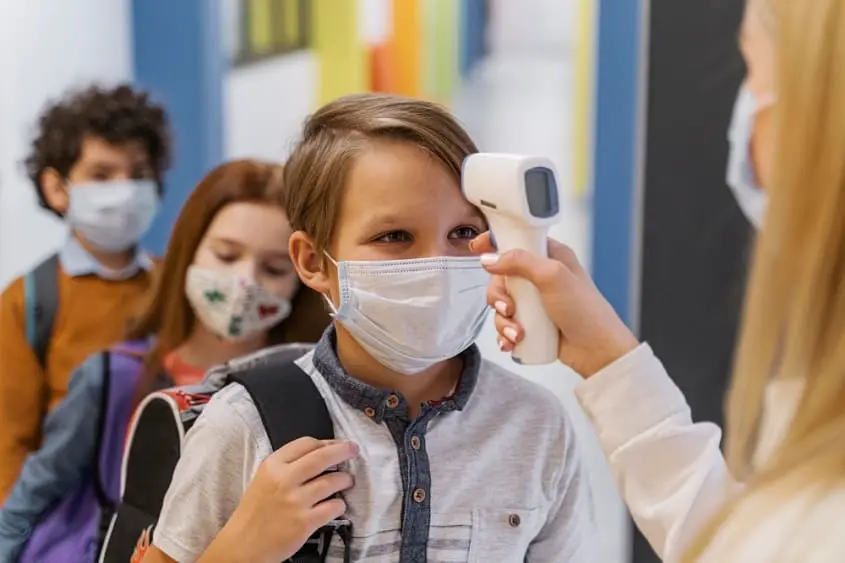What is COVID-19?
There are various common human coronaviruses that usually cause mild to moderate upper respiratory infection, like a common cold. COVID-19 (a novel coronavirus) is from this large family of viruses that cause infections in humans and animals.
The first cases of COVID-19 were identified in 2019 among people who had visited markets for selling live animals. The general symptoms of COVID-19 are fever, cough, cold, and shortness of breath. COVID-19 is more deadly than flu.
Can COVID-19 Affect Children?
There is no evidence to suggest that children are more likely to catch COVID-19 (coronavirus 2019). This means children are not more susceptible to this disease.
In fact, most of the confirmed cases reported for COVID-19 infection from Wuhan, China were in adults. Infections in very young children have been reported too though, but they are a few only. Most of them get infection from people they lived with and their infected family members.
Other coronaviruses such as SARS (severe acute respiratory syndrome) and MERS (Middle East respiratory syndrome), also did not affect children as much as adults.
It has been reported that in more than 44,000 confirmed cases from China, only 416 (less than 1 percent) were aged nine years or younger. No deaths were reported in children of this age group.
In Australia, only one child caught COVID-19 infection so far. Data from more than 100,000 COVID-19 infected cases reveals that pedriatric age group is the least affected.
It is still not clear whether the low numbers of child infections recorded is due to:
- low numbers of children exposure to the virus, or
- low numbers of children getting the infection
If children are infected, they may have milder symptoms.
If children are infected with COVID-19, and even if they have milder symptoms, they may still play a crucial role in COVID-19 transmission.
Children usually move freely, shed large volume of viruses, congregate in groups, and are at lower risk of severe disease and regularly maintain their daily activities.
What are the Symptoms of COVID-19 in Children?
Some children may show mild symptoms of coronavirus infection. In some cases, there can be no symptoms at all.
Symptoms which commonly occur include fever, runny nose, dry cough, and occasional diarrhea. In few children, this has progressed to shortness of breath and pneumonia also.
A very small number of children have required intensive care so far after getting infected with the coronavirus infection 2019.
How can we Protect Children From COVID-19?
The first instinct may be to take the child out of daycare/school or stop participating in extracurricular activities (also known as social distancing).
The best way to protect your child is to teach and increase proper hand and cough hygiene and avoid mingling with those who are already ill. Children should stay at home when sick.
Remind them always to:
- Avoid close contact with sick people
- Avoid touching their eyes, nose, and mouth
- Cover their sneeze or cough with a tissue, then throw the tissue in the trash
- Wash their hands often with soap or handwash and water for at least 20 seconds, especially after going to the bathroom, before eating and after blowing their nose, coughing or sneezing
- Use an alcohol-based hand sanitizer with at least 60% alcohol, if soap or handwash is not readily available
Is There Any Treatment for Coronavirus in Children?
Currently, there’s no specific vaccine for coronavirus. Most people with this infection, including children, get better with rest and fluids supply. People who are infected with COVID-19 and get appropriate care in hospital with breathing help, intravenous fluids and other treatments recover soon.
Medicines for the flu are unable to treat the infection because the coronavirus is different from the normal flu virus. Reseacrch is going on to find a treatment and vaccine for novel coronavirus, but this will take some time.
Steps for COVID-19 Prevention and Control in Schools
COVID-19 has been declared a Public Health Emergency of International Concern (PHEIC) and the virus has spread in many countries and territories. While the cause of COVID-19 virus is still unknown, but we do know modes through which the virus can be transmitted – through direct contact with the infected person.
WHO has released recommendations for schools to keep students, teachers and staff safe at schools and help prevent spread of this disease. The prevention measures of COVID-19 include such as:
- Develop a flexible attendance system and sick policies to encourage students and staff members to stay at home when they are ill.
- Schools should impose regular hand washing with safe water and soap, alcohol rub/hand sanitizer or chlorine solution and, daily disinfection and cleaning of school surfaces.
- Schools should provide safe water, sanitation and waste management facilities and follow environmental cleaning and decontamination processes.
- Schools should implement social distancing practices which include cancelling assemblies, sport games, and other events which create crowded conditions, and other things that may lead to close contact between people.
- Health education must be given at schools to prevent the spread of COVID-19 and other viruses.







